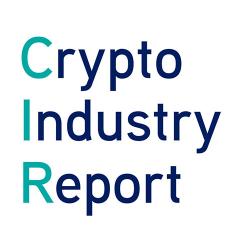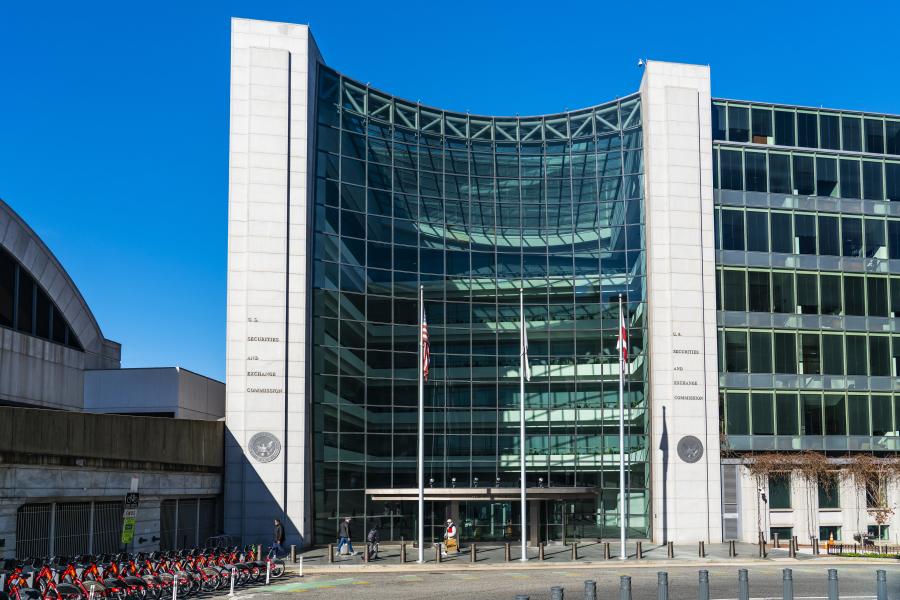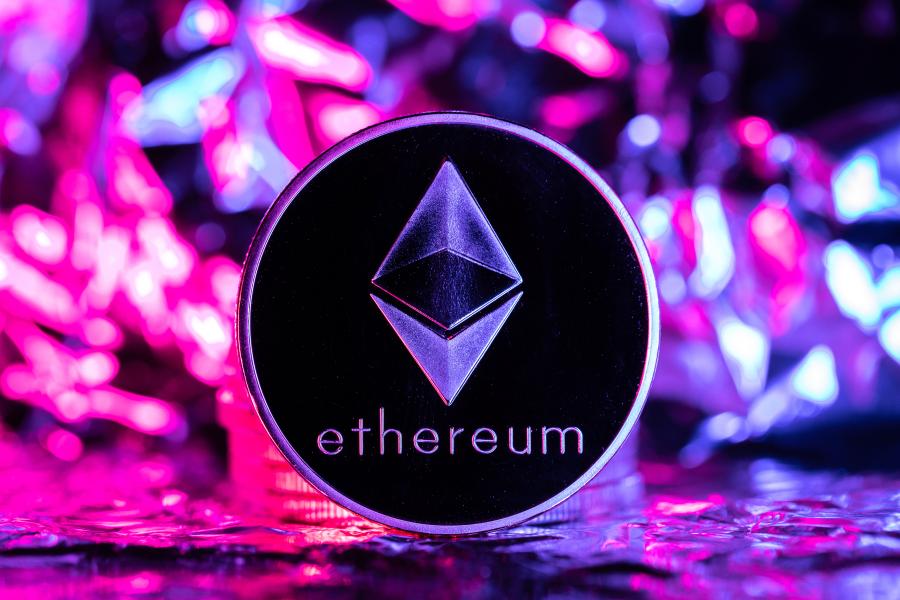Screening crypto projects: The regulators are on it
This week, our blockchain experts assessed the following topics:
- Screening crypto projects: The regulators are on it
- Banks still have a long way to go when it comes to allocating to crypto
- Crypto adoption: Between hype and reality
- The Macro trend for Web3 seems unabated
Our bi-weekly Crypto Industry Report provides you with valuable information on the global crypto industry – picked and analysed by our blockchain experts.
Screening crypto projects: The regulators are on it
Regulators have had a tough time keeping up with the rapidly growing crypto space that is dominated by a wide range of financial products. Nonetheless, recent developments show that they may be gaining ground signalling that crypto companies need to evaluate their compliance status now more than ever.
It may be too late, though, for Nexo. The crypto lender has recently gotten into the regulatory crosshairs for illegally selling securities. The California Department of Financial Protection and Innovation (DFPI) issued a cease and desist order against Nexo on September 26, 2022, joining seven state regulators that have brought legal actions against the crypto lender regarding its Earned Interest Product accounts.
These states include Washington, Vermont, Maryland, Oklahoma, Kentucky, New York, and South Carolina. Based on California’s cease and desist filing, Nexo’s Earned Interest Product accounts are securities and should have never been offered or sold without the regulatory green light. Interestingly enough, earlier this year, the company stopped offering the Earned Interest Product to new US clients as it focused on restructuring and registering it with relevant regulators. "As of July 31, 2022, over 18,000 California residents have active Earn Interest Product flex- or fixed-term accounts; these accounts collectively hold investments totalling at least $174,800,000," the filing stated.
Like Celsius Network which went bankrupt a few months ago, Nexo is what is called a CeDeFi company, illustrating the fact that these crypto projects are centralised entities dealing with DeFi protocols. As such, their duty to be compliant with security law is undisputed.
In a recent interesting move, US regulators also sued Ooki DAO, a decentralised protocol that offers tokenised margin trading and lending on Ethereum, for failing to comply with regulatory requirements. The company behind this project, bZeroX LLC, made significant efforts to shield itself from regulators by transferring the protocol to the Ooki DAO in August. The goal was to become a DAO in the true sense of the world, thereby becoming exempt from falling under the current regulations.
In an ironic turn of events, this move may have attracted the attention of regulators because the Commodity Futures Trading Commission (CFTC) issued an order against the protocol and DAO participants. It now appears that decentralisation cannot keep regulators at bay and communities could be held accountable for any alleged illegal activities carried out by a DAO. The project’s founders Tom Bean and Kyle Kistner paid a fine of $250,000 for three charges, one of them being the illegal engagement in leveraged and margin retail commodity trading without a company designated contract market (DCM) registration.
These two examples indicate that US regulators are coming for crypto projects structured in any form or shape. The crypto space hopes this regulatory interest is favourable and will provide clarity instead of impeding innovation further down the line.
Banks still have a long way to go when it comes to allocating to crypto
Some Wall Street banks and other traditional financial institutions have been dabbling in crypto assets despite the ongoing crypto bear market, a smart move if Nickel Digital’s survey results are anything to go by. According to the crypto company’s research, a section of wealth managers and institutional investors believe the bear market will cease in 6 months. That could mean getting into the crypto sector right now may greatly reward institutions in the future.
Interestingly, the world's largest banks' exposure to crypto is still very low as reported by a Basel Committee study. The research data indicates that the world’s largest banks are exposed to an estimated €9.4 billion ($9 billion) worth of crypto assets, mainly involving BTC and ETH. The exposure is “0.14% of the total exposure to risk from the 19 banks” that participated in the study.
Banks are hardly holding any digital assets because the capital requirements are massive. According to the Basel Committee on Banking Supervision (BCBS), a bank is advised to stick to a risk weighting of up to 1250% when holding BTC in its books. This means that under Basel III rules, capital of 1 USD is required for every $1 in bitcoin. The committee comprises the Federal Reserve and European Central Bank. Its mandate is to set global standards for banking regulations, which is why its suggestions are not taken lightly.
One of the Basel Committee’s greatest concerns is that crypto assets increase the risks that banks face. So, as long as cryptocurrencies remain volatile, it will be difficult for banks to hold more digital assets. Nevertheless, at some point, more and more banks will have to find a way around this because of rising client demand.
Crypto adoption: Between hype and reality
Despite the challenges banks face in adopting crypto, the wider banking industry is still looking for different ways to interact with the sector. SWIFT, for example, has partnered with Chainlink in a proof-of-concept project, whose goal it is to allow the “communications and movement of tokens between” several institutions. The project also aims to help financial institutions adopt blockchain without paying high upfront costs. SWIFT is the world’s top financial messaging network connecting an estimated 11,000 banks. The proof-of-concept project will use Chainlink’s Cross-Chain Interoperability Protocol (CCIP).
As crypto’s history shows, partnerships between digital asset projects and traditional companies are common in the space. However, more than once have they been used to hype projects with no intention of implementing anything substantial. Yet another such example is an August press release saying the Scottish Central Bank was creating a cross-border settlement currency in partnership with a crypto start-up called ALBA. The start-up was supposedly going to build the central bank digital currency on the XRP ledger. As some have argued though, this proposition is fake news since the Scottish Central Bank doesn’t exist, at least not until Scotland leaves the United Kingdom. Even more concerning is the fact that the ALBA website doesn’t work, indicating that something might be indeed fishy about the project and the news accompanying it.
Speaking of XRP (in a more positive light), a court in the US has yet again overruled the SEC’s attempt to withhold documents that are crucial in Ripple Labs’ defence. The project has been battling legal troubles of its own since regulators sued it in 2020.
The Macro trend for Web3 seems unabated
NFT trading volumes have slumped by around 99.6% since registering a record peak in January this year. Based on recent data, the total monthly trading volumes dropped from $17.1 billion on January 1st to $70.4 million on October 1st. The waning NFT mania coincides with sinking crypto prices in reaction to Federal interest rate hikes. As a result, the largest NFT trading platform, OpenSea, has also experienced a significant tumble in monthly volumes from $5.9 billion in January to $47.3 million on October 1st.
While NFTs are taking a beating, fan tokens are thriving. This is a new kind of crypto asset that gives membership perks like voting rights, exclusive content, and prizes to fans of sports teams. The most popular creator of these tokens, socios.com, is working with Formula 1 teams, top European football clubs, major US professional leagues, and esports clubs, among others. The platform has over 1.5 million users in 167 nations.
The popularity of fan tokens can also be seen when looking at the following metric: Their sales volume has outperformed NFT sales, according to data on Crypto Slam. For instance, the 30-day fan token sales volume was $7.1 billion compared to $514.4 million recorded in NFT sales. The top fan tokens by sales volumes at the time of writing were Santos FC, Lazio, and Paris Saint-Germain. These tokens could be seeing increased interest since the FIFA World Cup 2022 is just around the corner.
In that regard it is worth noting that FIFA plans to launch an NFT platform on Algorand called FIFA + Collect. It will highlight “affordable, inclusive, and accessible” non-fungible tokens (NFTs) portraying art, imagery, and remarkable soccer moments. Algorand is one of the few non-ETH layer-2 chains that have registered a positive total value locked (TVL) in the last few months. The TVL peaked in September surpassing over $260 million, probably due to FIFA’s NFT platform plans.
Although NFT trading volumes have plunged, FIFA’s plans to roll out an NFT platform indicate NFTs aren’t dead and the macro trend for Web3 and NFTs is unbroken. Apple’s entry into the NFT space also supports this notion. The tech giant recently allowed app developers to sell NFTs in-app. However, Apple will obtain a 30% cut from all NFT sales. This has sparked mixed reactions in Web3 communities, with some people bashing it and others seeing it as an opportunity to boost NFT adoption. For instance, Epic Games CEO Tim Sweeny criticised this move with a tweet saying: “Now Apple is killing all NFT app businesses it can’t tax, crushing another nascent technology that could rival its grotesquely overpriced in-app payment service. Apple must be stopped.”
Share post

Related Posts

To be continued: SEC pushes back at Coinbase
SEC pushes back against Coinbase's claim of no regulatory jurisdiction, stating the crypto exchange knowingly violated securities laws. Meanwhile, Gemini, owned by the Winklevoss twins, files a lawsuit against Digital Currency Group and CEO Barry Silbert alleging fraud and deception following the collapse of a lending venture. The Bank for International Settlements survey reveals that 93% of central banks are working on Central Bank Digital Currencies (CBDCs) which are seen as potential geopolitical policy tools and a challenge to the dollar's dominance. The race for a Bitcoin ETF intensifies, with BlackRock refiling its application featuring Coinbase as the market surveillance partner, as the Grayscale Bitcoin Trust's discount to net asset value narrows, potentially indicating the transformation into a proper ETF.

BlackRock fever: The ETF filing spree and institutional appetite
BlackRock filed for a Bitcoin ETF with the SEC, inspiring similar applications from firms like WisdomTree, Invesco, and Fidelity, and boosting Bitcoin's value. Traditional finance institutions such as Fidelity and Nasdaq are showing increased interest in crypto, with moves towards exchange and custody services. The defunct crypto exchange FTX, under new CEO John Ray III, is planning a potential revival after recovering significant assets. Meanwhile, the IMF is developing a global CBDC platform for cross-border transactions and DAI, a major stablecoin, is diversifying its backing from USDC to include real-world assets.

SWIFT explores blockchain interoperability
SWIFT has partnered with Chainlink to experiment with leveraging its infrastructure for transferring tokenized value across blockchain networks. The trials will address interoperability, regulatory challenges, and operational drawbacks for financial institutions in a blockchain environment. Chainlink will provide connectivity between private and public blockchains. SWIFT's findings will be published later this year.

China wants an Internet 3.0, while Hong Kong gears up for crypto trading launch
China is striving for advancement in Internet 3.0 technologies, with Beijing's white paper outlining plans to invest in the development of the metaverse and Web3 tech such as non-fungible tokens, but not cryptocurrencies due to the country's previous ban. Meanwhile, Hong Kong is launching its new crypto trading regulations, allowing retail investors to participate from June 1, 2023, with exchanges like Huobi Hong Kong beginning to offer spot trading to retail and institutional clients. Furthermore, the Cybersecurity and Technology Crime Bureau of the Hong Kong Police Force is launching a metaverse platform, 'CyberDefender', to educate the public about potential threats and crime prevention in the metaverse.

BRC-20: Innovating on Bitcoin is the new cool
A new Bitcoin “token standard” called BRC-20 is the hottest thing right now in the crypto space. It was introduced in March 2023 by a pseudonymous person called Domo. Bitcoin Request for Comment 20 (BRC-20) is an experiment that brings fungible tokens to the Bitcoin blockchain using the Ordinals protocol. Ordinals rely on ordinal theory, enabling the identification and tracking of individual satoshis within Bitcoin's existing supply, while also allowing them to be inscribed (associated) with data. Through this technique, satoshis (sats) are given ordinal numbers starting with zero. Anyone can add a script file to a sat to create and transfer a BRC-20 token on the Bitcoin blockchain. BRC-20 tokens are created using three functions: deploy, mint, and transfer.

US versus EU: Giants fighting for regulatory clarity
It is official now: The European Parliament voted overwhelmingly in favour of Markets in Crypto Assets (MiCA), legislation that will guide the crypto sector in all 27 European Union member states. 517 parliament members voted for it, while 38 voted against it. This approval makes Europe the first continent with comprehensive rules for cryptocurrencies. Also, it means that all EU member states will have unified crypto regulations. So, if a crypto business is approved in one EU member country, it could easily expand operations to another member state. The EU’s milestone was lauded by Binance as well as Kraken and Coinbase.

Ethereum: Another milestone reached with the Shanghai Update
On April 12, 2023, Ethereum successfully executed the planned Shanghai update also known as Shapella. The upgrade allows validators to unstake their staked ETH and withdraw their rewards, as well as staked ether if chosen. Now that another level of uncertainty has waned for the biggest smart contract blockchain, this new feature could attract more investors to stake their ether.

CFTC versus Binance:
Clash of the titans
The world’s leading crypto exchange by volume, Binance, alongside its CEO, Changpeng Zhao, and ex-Chief Compliance Officer, Samuel Lim, are being sued by the US Commodity Futures Trading Commission (CFTC).

Stablecoin USDC briefly lost its
peg. What do we learn from this?
One of the top stablecoins by market cap, USD Coin (USDC), de-pegged briefly from the US dollar on March 11 following the collapse of Silicon Valley Bank (SVB). Circle, the stablecoin’s issuer, held $3.3 billion in USDC reserves with the bank, which caused panic as investors rushed to withdraw their funds, assuming USDC could implode because of insufficient backing. However, the amount represented less than 8% of the stablecoin’s reserves.

Ethereum Shanghai upgrade pushed to April: Will there be too much selling pressure?
Ethereum stakers have been eagerly awaiting the Shanghai upgrade, which will enable them to withdraw their staked ether. Stakers’ funds have been locked since Ethereum introduced the proof-of-stake Beacon Chain in December 2020. The upgrade was originally slated to take place sometime in March but was pushed by about two weeks to April during a recent execution layer meeting.